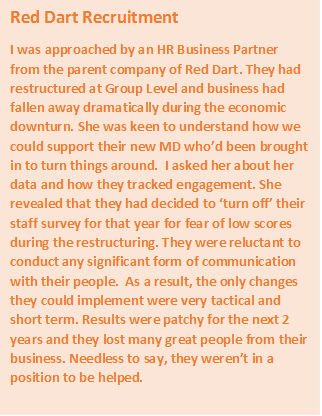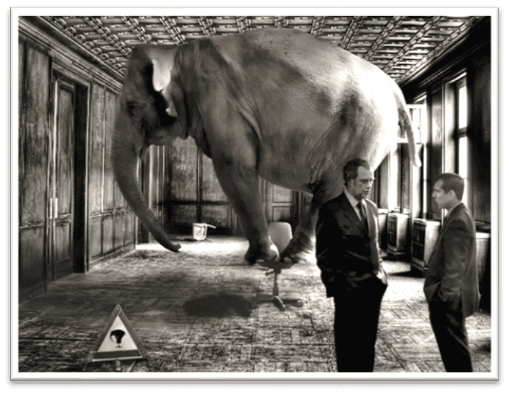Moments of Change
The journey & process towards gaining momentum in your Change Programmes:

It was famously said that “those that cannot remember the past are condemned to repeat it”; even when that means failure. Alongside leadership, engagement and productivity, discovering effective approaches to change is one of the most coveted areas of business and organisational life.
Here, Steve Bernard shares Connectwell’s formula, Momentum for successful and sustainable change. Based on decades of direct experience and professional practice, Momentum crystallises the key principles and ‘moments’ where change gains traction or simply falls away, costing so much in lost productivity and goodwill.
RATIONALE – the ‘why’
Why indeed. Why write this article, why does the world need another change approach, why attempt to do things differently in the first place? Asking ourselves that question and understanding the rationale behind any activity we focus on is essential. Sadly, in far too many cases we continue to see organisations and highly paid, often experienced managers blindly acting and attempting significant change without really questioning it or understanding what underpins it all.
When questioned, managers often reveal their change drivers to be the superficial motive of cost saving, profit or the will and instruction of the Director, CEO or Shareholder.
Not answering the fundamental why question early is one of top five reasons most change projects cost businesses millions of pounds and days of productivity in wasted effort. Here are all five:
1. Failure to recognise need for people to ‘let go’ of the past or the old way of doing things at a personal or emotional level.
2. Not explaining why, the change is imperative or beneficial, creating a better future for all.
3. No clear invitation and support provided for employees to actively get involved.
4. Lack of authentic role models and helpers to lead and show the way.
5. A weak will or understanding of the need to invest in building momentum to follow through and embedded change into the fabric of the organisation.
Senior Managers who seek major change and expert support often don’t know how to achieve it end-to-end, or they may lack the confidence, capability or capacity to execute it successfully. Therefore, when we are approached by our customers to support them, we quickly try to ascertain their strengths and blind spots based on what we know works.

Bold or Bolder – Moving the Obstacles to Change
A wealth of evidence exists today that proves organisations who have a clear purpose and vision outperform their peers in most cases over an extended period. This should no longer be surprising to any of us. We spend so much of our lives at work; if we don’t have a reason to be there beyond the need to earn a living, it’s less likely that we’ll excel or give 100%. Get behind a powerful cause or an important need in the market and that’s where people do their best work, going above and beyond.
RIGHT NOW – understanding your current state
Once there is a compelling reason to act, it’s hard to make a start unless you first understand where you are right now as an organisation or culture. We need to invest in some form of qualitative diagnostic as an important next step in any change process. Talking to people affected by the likely change is a great way to get them involved early and to engage them in two-way dialogue. The results can be truly game changing. Management teams typically come away with a handful of key insights as to how they arrived at the current situation and importantly what might work or be necessary to move forward. The great thing about a diagnostic phase is that it doesn’t need to be long, complex or drawn out. It does however need to be properly designed and sponsors need to be willing to listen to the results and work through them.
RESISTANCE – how to get through the tough times
 One of the most common mistakes we see people make is to fight the difficult elements of change. Managers who are put in charge will often criticise workers who are reluctant, and get frustrated by the lack of pace or progress and may even become antagonistic towards workplace representatives. In truth, organisations who can most embrace the resistance to change expressed by colleagues and learn from it are the best off in the long run. So much understanding and new information can come from the conversation even when it’s at its most difficult, provided it is two-way, continuous and constructive. We typically help our clients learn how to master this key capability. While this process may take 10 – 20% longer than imposing change, it means colleagues are engaged in the new design process much earlier. When ideas, options and opinions start to flow, you know you have a productive conversation going and will soon reap the benefits.
One of the most common mistakes we see people make is to fight the difficult elements of change. Managers who are put in charge will often criticise workers who are reluctant, and get frustrated by the lack of pace or progress and may even become antagonistic towards workplace representatives. In truth, organisations who can most embrace the resistance to change expressed by colleagues and learn from it are the best off in the long run. So much understanding and new information can come from the conversation even when it’s at its most difficult, provided it is two-way, continuous and constructive. We typically help our clients learn how to master this key capability. While this process may take 10 – 20% longer than imposing change, it means colleagues are engaged in the new design process much earlier. When ideas, options and opinions start to flow, you know you have a productive conversation going and will soon reap the benefits.
RESET – a new beginning
Once you have Momentum on your side you can start to truly redesign the organisation, both structurally and culturally. This is when you can gain more traction and start to infect the organisation by more and more people being enrolled in the process. Great organisations spend a lot of time and effort on the redesign elements; thinking about the environment, language and signals from senior management that make all the difference.
We are ALL only human after all! There are some universal truths about change; one is that we all need an opportunity to ‘let go’ of the past in our own personal way. All change processes require this ‘personal space’ where psychological change happens. Good sponsors and practitioners design space in early. Those who fear allowing people to talk about the past typically face people being ‘stuck in it’. Ghosts from the organisation’s past can then reappear over time and take you backwards.
It is because change ultimately happens at the level of ‘one’ as well as for whole organisational, that we need someone to follow. A key feature of Momentum is that we design it to ensure that there is always ‘pull’ from one level above. In other words, for operations managers going through change, we’ll ensure that the Operations Director level are bought in, prepared and have been through their own change process first. That way they are better able to support others in the journey too. This is because the quality of the line manager relationship has a disproportionately high impact on real world engagement levels and belief that the change is important and real.
We have found that each change project is different, as is each organisational culture. The resource requirements (steps and effort it’s going to take at each stage) are therefore different too. Rather than develop a one size fits all approach, we have instead developed a series of support kits as resource packs for each stage, e.g. Vision, Diagnostic, Project, Living & Learning.
Change capability is important to understand, whether it’s engagement champions, professional change managers or simply leading lights in your line management community, everyone needs a body of people to create the groundswell of movement.
Change can be a wonderful process if approached with the right mindset and with the right resources. It’s important to remember that change is very organic and is about people as well as process enablement. By starting with the why and taking the time to understand the starting point, you will set up your change projects with less risk and more potential. The more you involve your people in the process and use change agents to support the process, the faster you’ll gain momentum and remember change invariably has a direct link to leadership in any organisation. It will always take a handful of brave souls who are willing to put themselves at the leading edge and show others the way to successfully make changes.
What role have you played personally in the last few major changes in your business? How have you made a major impact, enabled others and led the way? Get in touch to find out to apply Momentum to your next important change….







